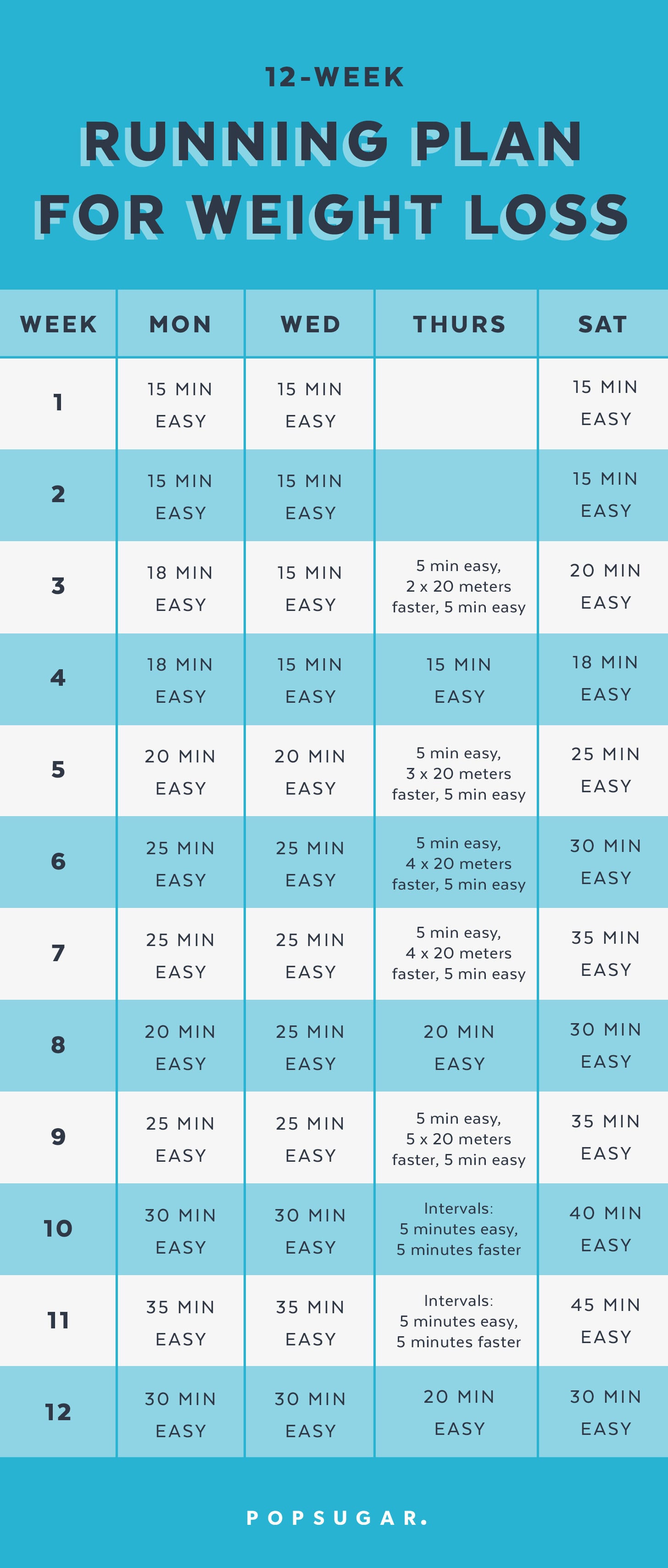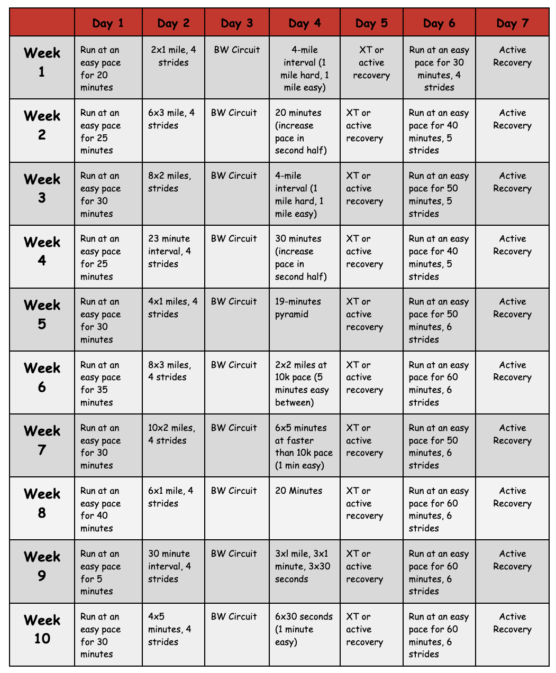Create a personalized running plan for weight loss with key insights and actionable steps. Shed pounds, increase fitness, and take charge of your goals.
Running can be an effective and accessible way to kickstart your weight loss journey. In this article, you will discover key insights and actionable steps to create a personalized running plan tailored specifically to your weight loss goals. By incorporating proper techniques, setting realistic expectations, and using a running plan for weight loss calculator, you will not only shed those extra pounds but also increase your fitness level and overall well-being. Get ready to lace up your running shoes and take charge of your weight loss goals.

Setting Your Goals
Determine your weight loss goal
Before you begin a running program for weight loss, it’s essential to determine your weight loss goal. Setting a specific and achievable goal will help you stay motivated and track your progress effectively. Consider how much weight you want to lose and set a realistic timeline for achieving your goal.
Consider your current fitness level
Assessing your current fitness level is crucial in designing an effective running plan for weight loss. Evaluate your cardiovascular endurance, strength, and flexibility to get an understanding of where you currently stand. This evaluation will help you structure your running program to meet your fitness needs and avoid any potential injuries.
Factor in your available time for running
Consider the amount of time you can dedicate to your running program. Take into account your other commitments and responsibilities to create a realistic schedule. It’s important to be consistent with your workouts, so plan your runs accordingly and ensure you have enough time to complete them without rushing.
Assessing Your Fitness
Consult with your healthcare provider
Before starting any exercise program, including a running plan for weight loss, it’s wise to consult with your healthcare provider. They can evaluate your overall health and guide you on how to safely incorporate running into your routine. They can also provide valuable advice based on your medical history and any pre-existing conditions or injuries.
Complete a fitness assessment
A comprehensive fitness assessment is essential to understand your body’s strengths and limitations. This evaluation can be done with the help of a fitness professional or through self-assessment tools available online. It will help you determine your current fitness level, identify areas you need to work on, and set realistic goals for improvement.
Consider any pre-existing injuries or conditions
If you have any pre-existing injuries or medical conditions, it’s crucial to take them into account when designing your running plan. Consult your healthcare provider or a physical therapist to understand any limitations or modifications you may need to make to your running routine. Prioritize your safety and avoid exacerbating any existing injuries or conditions.

Choosing Your Running Schedule
Decide on the frequency of your runs
Determining the frequency of your runs will depend on your current fitness level and schedule. If you are a beginner, starting with three to four runs per week is a good starting point. As you progress, you can increase the frequency if your body allows. Remember to listen to your body and allow for rest days to prevent overtraining and minimize the risk of injury.
Determine the duration of each run
The duration of each run will vary depending on your fitness level and goals. If you are a beginner, start with shorter durations, such as 20-30 minutes, and gradually increase the time as your endurance improves. Aim for steady progress without pushing yourself too hard too soon. Consult with a running coach or fitness professional if you need guidance on determining appropriate run durations for your level.
Plan for rest and recovery days
Rest and recovery days are just as important as your running days. Your body needs time to repair and rebuild itself after intense workouts. Schedule at least one or two rest days each week to allow for muscle recovery and adaptation. Use this time to engage in other low-impact activities, such as stretching, yoga, or light walking, to support your overall fitness goals.
Selecting the Right Running Gear
Invest in supportive running shoes
Choosing the right running shoes is essential for comfort and injury prevention. Invest in a high-quality pair of running shoes that provide adequate cushioning, support, and stability. Visit a specialty running store or consult with a professional shoe fitter to ensure you get the right shoe for your foot type and running style.
Choose appropriate clothing for comfort
Wearing appropriate clothing can make your running experience more enjoyable. Opt for moisture-wicking fabrics that help keep you dry and comfortable during your workouts. Dress in layers to accommodate changes in weather and temperature. Consider the season and weather conditions when selecting your running attire.
Consider additional gear like a GPS watch or running belt
While not essential, certain running gear can enhance your running experience. A GPS watch can help you track your distance, pace, and heart rate, allowing you to monitor your progress effectively. A running belt or hydration pack can be beneficial for carrying essentials like water, keys, and phones during longer runs. Assess your needs and budget to determine if any additional gear would be beneficial for your running plan.

Warm-Up and Cool-Down Routines
Include dynamic stretches in your warm-up
Prior to starting your run, it’s crucial to warm up properly to prepare your body for the activity. Incorporate dynamic stretches that engage your muscles and joints through a full range of motion. Examples of dynamic stretches include leg swings, arm circles, and walking lunges. Aim to spend 5-10 minutes on your warm-up routine.
Perform a gradual warm-up before running
After completing your dynamic stretches, begin your run with a gradual warm-up. Start with a brisk walk or easy jog for a few minutes to elevate your heart rate and gradually increase your pace. This allows your body to transition from rest to exercise gradually and reduces the risk of injury.
Incorporate static stretches in your cool-down
At the end of your run, it’s important to cool down properly to aid in recovery and prevent muscle soreness. Include static stretches in your cool-down routine, holding each stretch for 15-30 seconds. Focus on major muscle groups used during running, such as the calves, hamstrings, quadriceps, and hips. Cooling down and stretching can promote flexibility and reduce the likelihood of post-run muscle tightness.
Building Your Endurance
Start with a combination of walking and running
If you are new to running or have low fitness levels, starting with a combination of walking and running can help build your endurance gradually. Begin by alternating between walking and running intervals. For example, start with 1 minute of walking followed by 1 minute of running. As you progress, gradually increase the running intervals and decrease the walking intervals.
Gradually increase your running intervals
As your endurance improves, increase the duration of your running intervals and decrease the time spent walking. Aim to gradually progress towards running continuously for longer periods. Listen to your body and increase the intensity and duration of your runs at a pace that feels challenging but manageable. Remember to incorporate rest days and recovery weeks to allow your body to adapt and get stronger.
Implement progression runs to build stamina
Progression runs are an effective way to build stamina and improve your running endurance. Begin your run at a comfortable pace, and gradually increase your speed as you progress. Aim to finish your run at a slightly faster pace than your starting pace. Progression runs help stimulate cardiovascular adaptations, improve your aerobic capacity, and prepare you for longer, more challenging runs.

Incorporating HIIT and Intervals
Understand the benefits of high-intensity interval training (HIIT)
High-intensity interval training (HIIT) involves short bursts of intense exercise followed by periods of active recovery. Incorporating HIIT into your running plan can be highly effective for weight loss. HIIT workouts increase calorie burn, boost metabolism, and improve cardiovascular fitness. However, HIIT workouts are intense, so they should be properly implemented based on your fitness level and advised by a fitness professional if needed.
Incorporate interval workouts to boost calorie burn
Interval workouts involve alternating between periods of high-intensity effort and periods of recovery or lower-intensity exercise. These workouts can be incorporated into your running plan to maximize calorie burn. For example, you can alternate between sprint intervals and jogging or walking intervals. Interval training challenges your body, improves aerobic and anaerobic fitness, and can help break through weight loss plateaus.
Alternate between intense efforts and recovery periods
When incorporating intervals into your running plan, ensure you alternate between intense efforts and recovery periods. This allows your body to work at high intensities and then recover, maximizing the benefits of interval training. Find a balance between pushing yourself during the intense efforts and allowing for adequate recovery to avoid overexertion and minimize the risk of injury.
Tracking Your Progress
Use a running app or fitness tracker
Tracking your progress is essential to monitor your performance and stay motivated. Utilize a running app or fitness tracker to record your runs, track distance, pace, duration, and calories burned. These apps can also provide insights into your progress over time, which can be highly motivating and help you set new goals.
Record your running distance and time
In addition to using a running app or fitness tracker, consider keeping a running log or journal. Record your running distance and time for each workout to track your progress. This tangible record allows you to visually see improvements and identify any patterns or trends. It also serves as a reminder of your accomplishments and keeps you accountable to your goals.
Monitor your weight loss journey
While running can be an excellent tool for weight loss, it’s important to remember that weight loss is a complex process influenced by various factors. Monitor your weight loss journey alongside your running progress, but also consider other aspects such as nutrition and overall lifestyle habits. Use measurements, body fat percentage, or how your clothes fit as additional indicators of progress.

Fueling Your Runs
Eat a balanced diet for energy and recovery
Proper nutrition plays a crucial role in fueling your runs and supporting your weight loss goals. Aim for a balanced diet that includes a variety of fruits, vegetables, whole grains, lean proteins, and healthy fats. Prioritize complex carbohydrates for sustained energy and sufficient protein for muscle repair and recovery. Consult a registered dietitian to develop an individualized nutrition plan if necessary.
Hydrate adequately before, during, and after running
Staying properly hydrated is essential for optimal performance and overall health. Drink enough fluids before, during, and after your runs to maintain hydration. Start your run well-hydrated and sip water or a sports drink during longer runs to replenish electrolytes. After your run, ensure you drink enough fluids to rehydrate and support recovery.
Consider pre- and post-run snacks for optimal performance
Eating a small snack before and after your runs can provide the necessary fuel and aid in recovery. Before your run, opt for easily digestible carbohydrates, such as a banana or a granola bar, to provide energy. After your run, prioritize a combination of carbohydrates and protein to replenish glycogen stores and promote muscle repair. Experiment with different snacks to find what works best for you.
Staying Motivated and Overcoming Challenges
Set short-term and long-term goals
Setting specific, realistic, and measurable goals can keep you motivated and focused on your running plan for weight loss. Set both short-term goals, such as completing a certain distance or improving your pace, as well as long-term goals, such as participating in a race or achieving a specific weight loss milestone. Celebrate your achievements along the way to maintain motivation and momentum.
Find a running buddy or join a running group
Running with a partner or joining a running group can provide accountability, support, and an extra boost of motivation. Having someone to share your running journey with can make the experience more enjoyable and help you stay committed. Look for local running clubs or groups in your area, or reach out to friends or family members who may be interested in joining you.
Overcome common obstacles like lack of motivation or time constraints
During your running journey, you may encounter obstacles such as lack of motivation or time constraints. It’s essential to develop strategies to overcome these challenges. Utilize techniques like setting a schedule, finding a routine, varying your running routes, or listening to motivating music or podcasts during your runs. Remind yourself of your goals and the benefits of running for weight loss to stay motivated and committed to your plan.
In conclusion, creating a running plan for weight loss requires careful consideration of your goals, fitness level, available time, and gear. Assessing your fitness and consulting with healthcare professionals are crucial steps to ensure a safe and effective running program. Choosing the right running schedule, gear, and incorporating warm-ups, cool-downs, and intervals will help you build endurance and maximize calorie burn. Tracking your progress, fueling your runs with a balanced diet, and staying motivated through goal-setting and support systems are key factors in achieving your weight loss goals. Remember to prioritize safety, listen to your body, and enjoy the journey as you embark on your running plan for weight loss.
